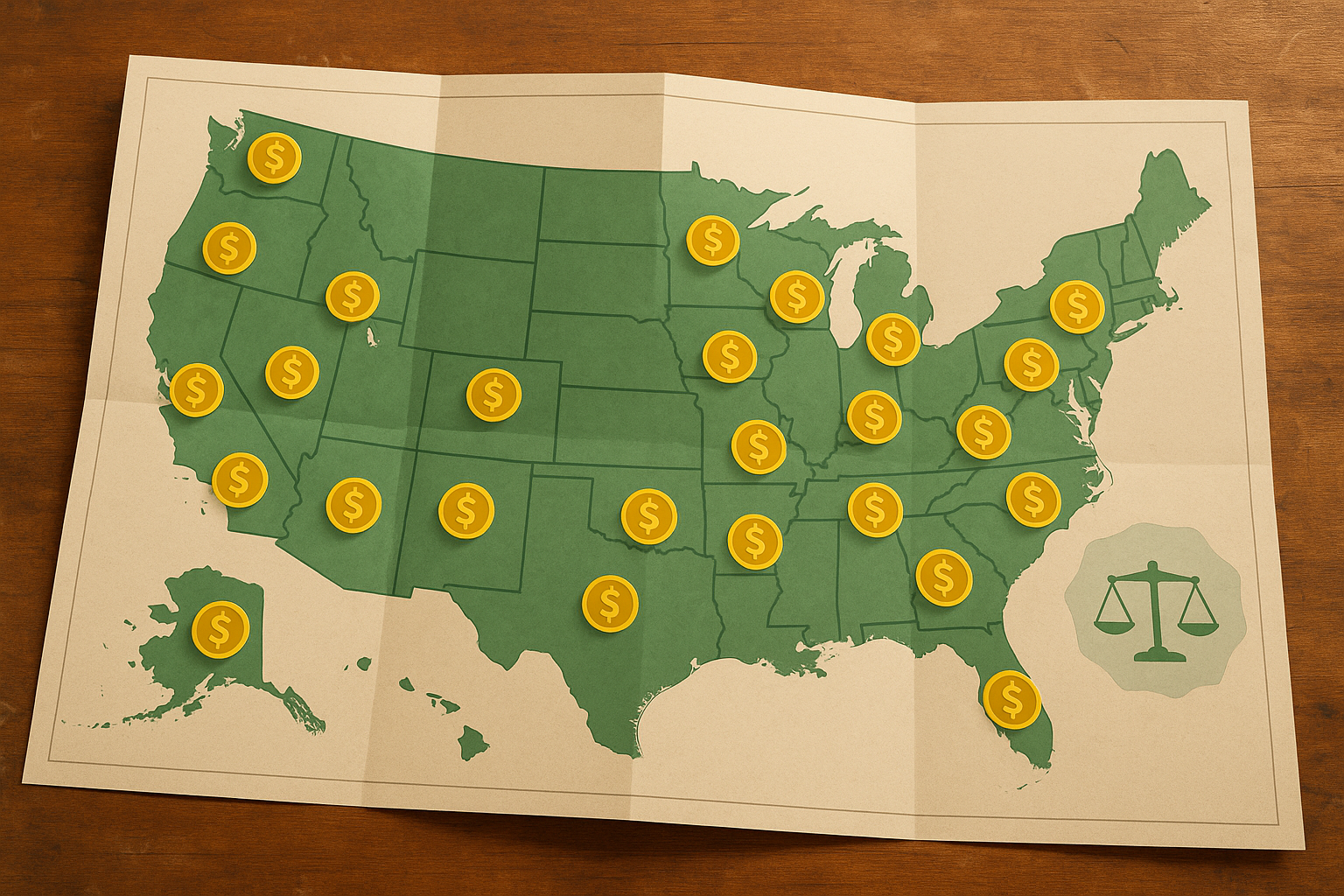A new map has revealed where the largest gold deposits in the United States are located — and the findings confirm what many in the mining industry have known for years: Nevada and Alaska dominate the U.S. gold landscape.
The updated data shows just how concentrated America’s gold wealth is, highlighting the states, regions, and geological formations that hold the most promise for investors, miners, and policymakers.
Where the Gold Is
- Nevada remains the undisputed leader, accounting for roughly 70% of U.S. gold production. The famous Carlin Trend and surrounding deposits make Nevada one of the world’s richest gold-producing regions.
- Alaska comes in second, producing about 16% of U.S. gold output. Its mix of placer (river) and lode (rock-based) deposits, combined with challenging remote terrain, makes it a complex but vital source of gold.
- Other Western States, including Colorado, Arizona, California, and South Dakota, contribute smaller shares. While not on the same scale as Nevada or Alaska, they still play an important role in total output.
Types of Gold Deposits
Gold in the U.S. is generally classified into two main categories:
- Lode Deposits: Gold locked in veins or layers of rock. These require intensive mining (underground or open pit).
- Placer Deposits: Loose gold particles found in riverbeds, sand, or gravel, carried there by erosion and water flow.
Most large-scale commercial production comes from lode deposits, especially in Nevada, where microscopic “Carlin-type” deposits dominate.
The Numbers That Matter
| Metric | Finding |
|---|---|
| Share of U.S. gold from Nevada | ~70% of production |
| Alaska’s contribution | ~16% of total |
| Other states combined | ~14% of production |
| Total U.S. resources (identified + undiscovered) | Estimated ~33,000 tons |
This means two states control more than 85% of domestic gold output, underscoring the strategic importance of Nevada and Alaska.
Why It Matters
- Economic Impact: Gold mining supports thousands of jobs and billions in revenue.
- National Security: Concentrated supply raises concerns about resilience and dependence on a few regions.
- Environmental Policy: Stricter rules in some states could impact production levels.
- Future Exploration: As technology advances, smaller deposits in other regions may become more commercially viable.
Challenges Facing U.S. Gold Production
- Remote Locations: Alaska’s deposits require significant infrastructure, including roads, energy, and transport.
- Environmental Concerns: Mining carries risks for ecosystems, water use, and land reclamation.
- Regulatory Hurdles: Permitting processes can delay new projects by years.
- Geopolitical Risk: As gold becomes more valuable globally, competition for resources intensifies.
Frequently Asked Questions (FAQ)
Why does Nevada dominate U.S. gold mining?
Nevada’s geology is unique. Its Carlin-type deposits contain microscopic gold spread across large rock formations, allowing for massive-scale mining.
Is Alaska’s gold different from Nevada’s?
Yes. Alaska has both lode and placer deposits, while Nevada is almost entirely lode-based. Alaska’s operations face harsher environmental and logistical challenges.
Are there undiscovered deposits left in the U.S.?
Yes. Estimates suggest tens of thousands of tons remain undiscovered, though many are in remote or technically challenging locations.
Can other states compete with Nevada and Alaska?
Not at the same scale. States like California, Colorado, and Arizona produce gold, but their deposits are far smaller in size.
Does recycled gold affect mining demand?
Recycling contributes to overall supply but does not significantly reduce the need for new mining, especially as demand from technology and investment continues to grow.
Key Takeaway
The new gold deposit map shows that Nevada and Alaska control the future of American gold mining, together producing more than 85% of the nation’s output. While other states play a supporting role, the concentration of resources highlights both opportunity and risk.
For investors, miners, and policymakers, the message is clear: the U.S. gold industry is booming — but it’s also highly dependent on a few key regions.




